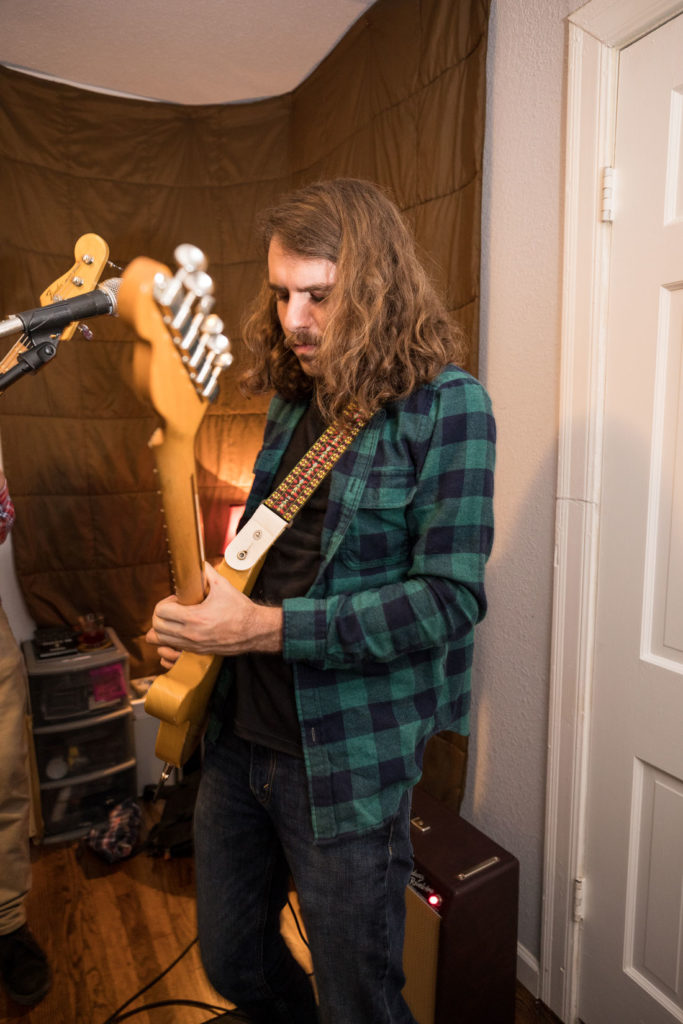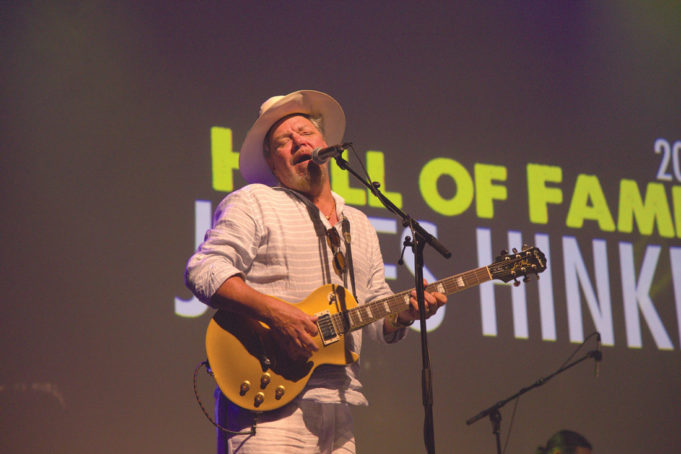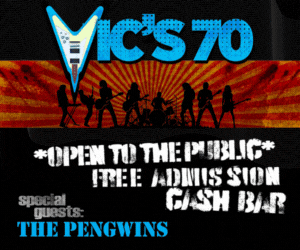Fort Worth’s musical topography features a wide gamut of genres exhibited by an even greater number of performers. Country, singer-songwriter, rock, pop, punk, metal, rap, hip-hop, R&B, plus a host of Latinx-inspired sounds like Tejano and cumbia, and even a handful of reggae bands –– any one of these can be found somewhere in this city on any given week, and more often than not, multiple genres appear on the same bill. But if you’re looking to hear blues, your options are becoming increasingly limited, which is sad because Cowtown once had a vibrant blues scene. Used to be, you’d go to a dive bar and strike up a conversation with a gray-haired guy who looked like he played guitar, and he would inevitably tell you some hoary, possibly apocryphal tale about this one time where he “jammed with Stevie.” But the fact of the matter is that those tales, as well as the people who spin them, are something of a dying breed. The popularity of the blues has been on the decline for a long time, and apart from a couple far-flung weekly jams and the Keys Lounge’s regular roster of blues shows that are keeping the flame alive, the scene is fading into the past.
Over phone interviews with veteran singer-songwriter James Hinkle, who’s been a mainstay in Fort Worth’s blues scene for several decades, and guitar wunderkind Matt Tedder, 23, who was introduced to the music and its local luminaries when he was 9, the Weekly learned the honest truth: The blues, despite its importance as a progenitor and essential building block of nearly every style of American popular music, is increasingly aging out of cultural relevance. But it’s not dead yet. If anything, it has potential to be the next true underground music. But that’s only if it turns on some youthful prodigies.
Fort Worth Weekly: What’s up with the blues scene these days?
James Hinkle: Well, it’s happening. There are things going on all over the place. We just had an old J&J’s [Blues Bar] reunion at the Tin Panther, and that was very well attended – a lot of players, place was packed, great crowd. But as far as venues go, the Keys Lounge has taken over as Blues Central. A lot of these guys like Buddy Wittington, who was doing regular gigs there for years, and lately he’s been doing it at this old honkytonk called The Finish Line, and everyone loves it. Jerry Clark and his guys in the Love Shack Band do every Wednesday at Buttons. There’s another jam Thursday at Keys Lounge, and they have blues on the weekends.
Yeah, but to be honest, blues is aging out. When our heyday at J&J’s was going on, that was 20 years ago. The crowd doesn’t get out like they used to. They’ll get out for special shows, but I’ve also noticed an influx of younger guys playing, who will attract the older crowd but also a contemporary audience. Matt Tedder, for example. He is bringing a whole new life and a whole new audience. They let me play with them, and we have a great time – really carrying on the tradition of blues and rock.
Dylan Bishop [from Austin], he’s great. He’s been getting a lot of attention – Jimmie Vaughan has taken a liking to him. Gary Clark Jr., he’s from Austin, and he’s pretty big. Rio Casey up here in the DFW area, multi-instrumentalist, guitar, upright bass, drums – he’s one of those kids you love to hate because you go, ‘Man, why wasn’t I that talented?’
In the way that Stevie Ray Vaughan brought blues back into the popular music conversation in the ’80s, do you see that happening again?
No, because it was a different time. Back then, Muddy Waters was still alive. Those old guys got to have one last hurrah. But I see blues continuing on. Every now and then, someone will come on the scene and give it a shot in the arm. You’ve got guys like Joe Bonamassa and Gary Clark Jr., who are showing blues to a new generation, mixing it up in different ways. Of course, in the blues scene, you get the hardcore fans for whom nothing’s going to do except the old scratchy records, but there are more contemporary people who want to hear newer stuff.
What about blues events? Are people still going to things like the Bedford Blues Festival?
Oh, yeah. They’re big occasions now. There are food trucks and vendors – it’s a real happening. But, man, when you go to Europe, it’s crazy over there. I go just about every year. I tour with a band called the Transatlantics, mostly [in] Belgium, Holland, and the Northern Part of France.
Spring and summer and early fall, there are lots of festivals. There are bands that play all of them. Buddy Guy is still alive, so every fest wants Buddy Guy. He’s one of the last of the old-school cats, but most of the slots are filled by more contemporary acts, and they haven’t been around to have that legendary status. One guy from Texas, Mike Zito, is doing a lot of national stuff.
Could there be a new J&J’s-type scene these days?
I don’t know. The closest thing I’m seeing is [the career of] Dylan Bishop. He’s maybe 21, 22. He’s pulling in a following. Matt Tedder, if he had a group that all they did was blues stuff, maybe that could get some attention. I don’t think it’ll ever be like what it was in the early ’80s, but the interest is still there. People still want to hear good music. The musicianship is still a draw.
When was your introduction to the blues scene?
Matt Tedder: I started playing guitar when I was 9 years old. My guitar teacher, Dennis Dulea, was strictly blues, and he played the original Cellar plenty of times. He and I played some gigs together, went out and saw some people play. And even then, when I was a young kid, I noticed it was an older crowd, older guys playing the tunes. But it was cool, the blues scene. It was welcoming, and it was a good thing for a kid like me who wanted to learn – a lot of open jams. I loved seeing Buddy Whittington. I loved seeing Bugs Henderson, and I love seeing Hinkle. It was really cool in that I didn’t know it was about to fade.
What do you mean ‘It was about to fade’?
I guess what I mean is that now you can only see those types of things at the Keys Lounge, for the most part. I remember there was this random club I saw Bugs at one time. I can’t think of venues that actively book blues anymore. When I was getting into it, I’d see Bugs play at McDavid Studios Studio, which obviously isn’t a blues club. But that was an event, and people showed up. My connection to the scene was through all those guys who are legends around here –– Bugs, John Nitzinger, and my guitar teacher, Dennis Dulea.
Do you think blues appeals to younger musicians?
It’s a great gateway to figure out other genres. Ray Charles said, ‘If you can play the blues, you can play anything.’ It teaches you how to feel the notes that you play. Honestly, if kids get into the blues these days, it’s because of John Mayer. If they get into that [John Mayer] Trio record [the live album Try!]. John does a pretty good job, I guess. And if a kid wants to backtrack, John Mayer gives credit where it’s due, so there is a beacon of hope for the blues. Gary Clark Jr. is another. But mostly, I’m just not blown away by those guys like I was with the players we had here in Fort Worth from back in the day.
Do you think blues can come back into popular esteem like it used to be?
To reach a level of success like a newer rock band, like Tame Impala, for example, no. But I do think the blues is worth knowing about. But I don’t think it’s going be that popular, and, man, I hate to say that, because I love the blues. It’s important, and it’s where a lot of stuff came from. But even the guys in the ’60s that achieved success, they mixed it up. Because if you play an hour and half of solid blues, people are going to want to hear something else, like ZZ Top. I think blues in its purest form won’t get where it used to be. But it’s a handy tool to use in music. People dig that grit.

I don’t play strictly blues sets like I used to, but I’ve been doing this thing recently, the first Thursday of every month, where I meet up with some friends – John Denny, John C. Trevino – and we do a blues jam at Antebellum Ale House in Weatherford. It’s fun. It’s a nice dose of it –– play blues all night long, get people to come up and jam. When I was younger, I achieved a little success in Nashville with the International Blues Challenge. I didn’t place in the finals, but I got to play the Orpheum in Memphis. But I was just getting into my 20s, and who will believe a 20-year-old white kid who’s doing just fine in life playing the blues?
The people who have been into the blues for a long time, that crowd is pretty darn old. I mean, we are going to lose the Beatles eventually, and then what? Yet Stevie Ray Vaughan brought back the blues for a minute, and Brian Setzer brought rockabilly back. And Jack Barksdale, he’s 11 years old, and he’s doing a pretty good job. He plays the blues, and it’s frickin’ awesome.
Do you think blues is only losing its cultural currency here, or is it happening everywhere?
I watched this documentary on Netflix about the evolution of hip-hop. They were talking about how the blues was the most popular form of music for African-Americans from the ’30s into the ’50s, but then it shifted to soul and R&B and disco. The way the documentary put it, in terms of African-American history, once they made headway with civil rights, they didn’t want to revisit those hardships that the blues guys were singing about. But at one time, that was the predominant style that African-American people listened to. Now it’s rap and hip-hop and R&B. You can hear traces of blues in the samples, but black people aren’t doing the blues anymore, not like way back when. And I don’t mean any offense, but you have white guys in fedoras and bowling shirts doing it now, and when you compare that blues to what it was when it started, it’s a little cheesy. But you can make a living doing it.
Blues festivals are popular, but comparatively, nothing now stands up to how it used to be, and I think James [Hinkle] and Buddy [Whittington] would maybe agree. There are still old cats who are still doing it, but it’s never going to be the same. You listen to B.B. King, Live at the Regal – man, people don’t react to that anymore. You hear that crowd’s reaction, and it’s like, ‘Goddamn.’ You might get that at the Keys [Lounge], but mostly, I feel like it’s not as exciting to the average listener. As musicians, we can appreciate it a little bit more, but to the average listener, it’s easy to stereotype – ‘Oh, my woman left me, I’m so blue.’ But Willie Dixon said that’s not all the blues. Blues are the facts of life. You just tell it like it is.













You totally left out Michael Lee!
Interesting article. We do have a really rich music scene here in Fort Worth, but I agree that the Blues musicians aren’t quite as prominent as they used to be.
Definitely not. he’s actually coming out stronger!
Rich music scene in Fort Worth? Uh. No. Not even close.
blues is one of the best music in the world of today
I knew he’s gonna come out stronger